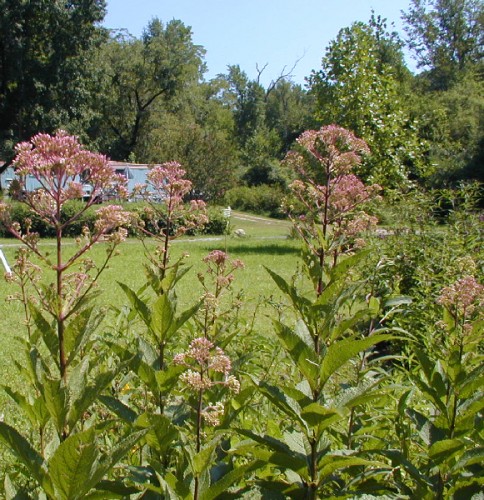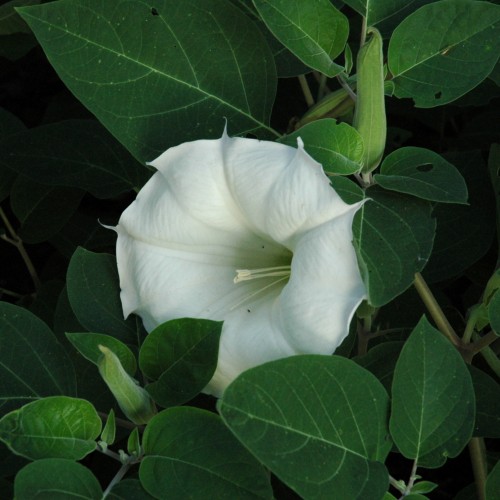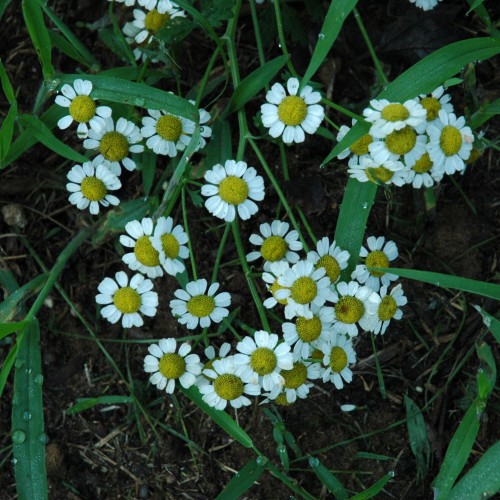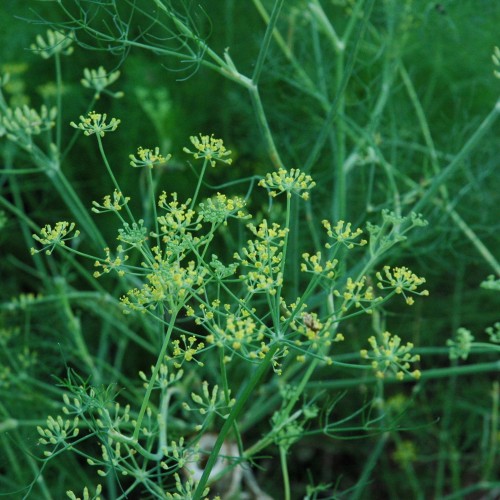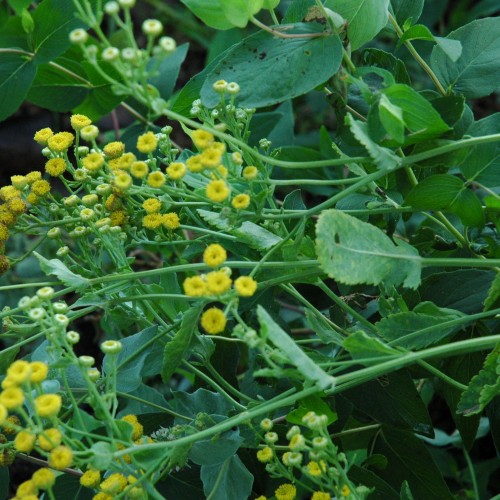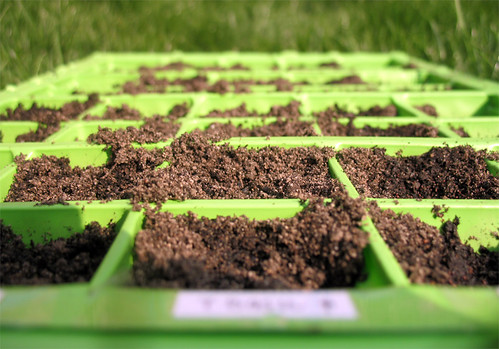by Kenan White | Nov 5, 2012 | Basics, Gardening, Growing, Herbs, Seeds |
Sweet grass (Hierochloe odorata) is a Native American grass used in prayer and purifying ceremonies. It is one of the four herbs sacred to Native Americans. Growing Sweet Grass is not difficult once you have a plant, but obtaining that first plant can be difficult. The seed does not store well, or maybe not at all. Purchased seeds come many times with a guarantee of only ten percent germination. From my experience purchasing Sweet grass seed, zero germination is more accurate.
If you have a Sweet Grass plant that is thriving, there are two ways to increase your number of plants. The easiest way is to sow fresh seeds harvested from your plant. I keep an open flat of potting soil next to potted sweet grass. As seeds mature and turn brown, I gently cut the stalk and then strip it of seeds over the soil. Spread the seeds evenly over the surface and gently water. Sometimes the stem holding the seed is still green, but make sure the seeds are completely brown before harvesting. Germination will begin in one to two weeks; allow the seedlings to grow a few inches before transplanting to pots. The seeds ripen over time, so you may have to leave the flat with the plants and harvest ripe seeds as they mature.
Division is the next best way to obtain more sweet grass plants. This is best done in fall or winter to plants that are dormant. Sweet grass spreads in clumps with rhizomes. These shoots can be separated from the mother plant once they have formed new roots. To protect the mother plant, remove side shoots and leave the main clump together. This method can only produce a few new plants at a time and requires some plant skills The fresh seeds of Sweet Grass germinate readily and the plants produce plenty of seed, so this is the easiest method to increase Sweet Grass.
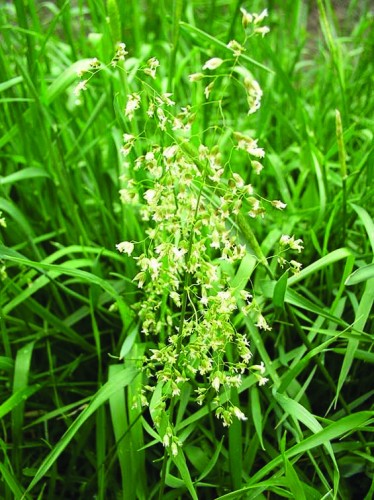
by Kenan White | Oct 9, 2012 | A Year in the Life.., Basics, Gardening, Growing, Herbs, Miscellaneous |
I am published in Fine Gardening magazine…
It all started with questions I was getting from customers about growing outdoor herbs in the winter. Because we strive to provide an exchange of information for all types of growers, I was more than happy to help. Fine Gardening was getting the same questions from their readers that we were getting from our customers, so they picked up my article and used it in their December 2012 edition to help reach more growers who were having the same questions.
A Strategy for Maintaining Fresh Herbs in Winter
Here are a few tips to help you winter over your favorite herbs:
3 reasons to bring your herbs indoors:
- Keep the herbs alive to get more months of enjoyment
- Enjoy fresh flavor for all of your hearty winter dishes.
- To keep tender plants over-winter for spring planting
When to bring herbs indoors: Two weeks before the first hard frost, typically mid-Sept to mid-October
How to repot:
- Choose the healthiest plants and compost the others.
- Clean soil of debris and weeds
- Dig plants carefully, saving a generous root ball.
- Repot into containers 2” wider and deeper than the root ball using fresh potting soil
- Thoroughly water newly potted plants
- Leave plants outside for a few days to acclimate to their new containers.
Indoor Care Tips:
- Choose a sunny location with 6-8 hours of direct sun.
- Consider temperature and humidity. Don’t place them where they will dry out quickly or be in a cold, drafty spot.
- Typically herbs don’t need a lot of water. Check soil by sticking your finger about a half inch in to test for moisture.
- Room temp should not go below 50 degrees
- Let the plants rest before harvesting
- Don’t be alarmed if your herb plants lose their lower leaves as this is the plant’s way of dealing with the change and getting rid of leaves that no longer produce enough food. Lemon Verbena is especially likely to do this.
Which herbs will work best indoors?
- Tender perennials: Bay, Lemon Verbena, Lemon Grass
- Biennial herbs: parsley
- Annual herbs: cilantro, arugula,
Dormancy requirements make some plants better choices.
- Unless you want to add grow lights, avoid plants that go dormant like mint
- Hardy perennials are best left outdoors. Rosemary, Lavender, Mint
6 plants to keep for winter then return to garden in spring:
6 plants that are used for extended harvest.
Replanting your herbs for Spring:
After the last frost, usually late April or early May, start placing potted herbs outside during the day so they get accustomed to a new climate. Keep an eye on night temperatures. Begin to leave them out when night temperatures are above 50F.
- Plants should have been pruned in winter. Trim stray stems to keep plants bushy
- Replant in mid-May
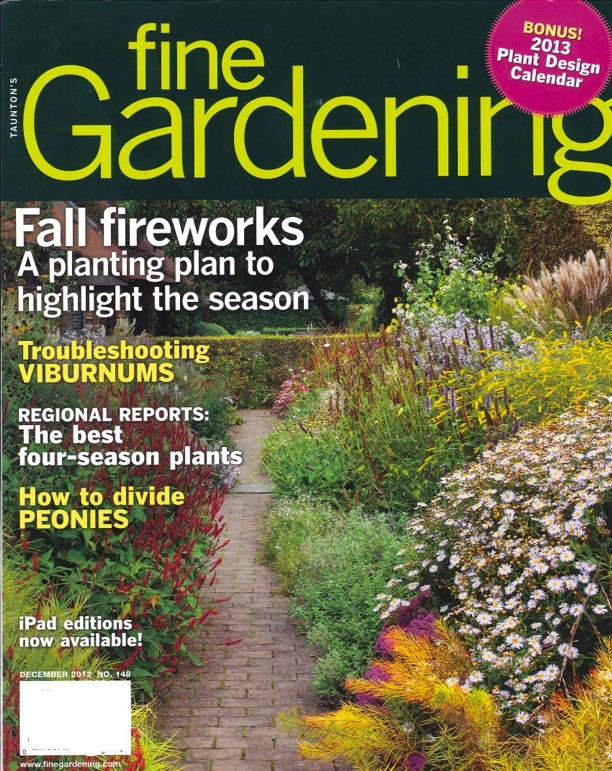
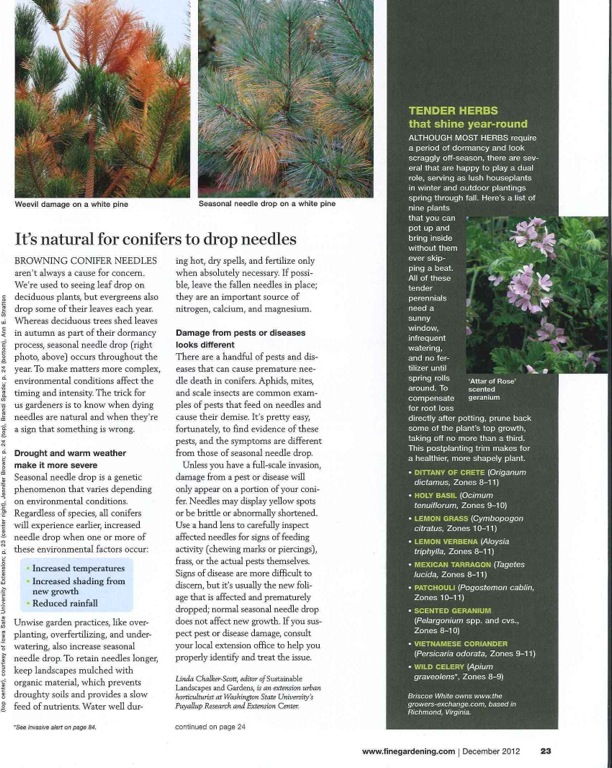
by Kenan White | Oct 1, 2012 | A Year in the Life.., Exploring, Gardening, Growing, Herbs, Miscellaneous, Wildlife |
Chamomile a weed? One person’s weed is another person’s herb!
While on a trip to Prairie Canada, I was surprised to find find common chamomile blooming among the prairie plants. After first spotting this familiar herb, I began seeing it along the road shoulder, in fields of peas and beans, and even in the lawn where I was staying. From my host, I learned that on the prairie farmers consider chamomile a noxious weed and work hard trying to eliminate it from their crops fields. This is a good example for comparing a desirable herb plant from a weed. And as the description for weeds explains; it all depends on where a plant is growing! So even though chamomile is a weed is some places, it is a welcome herb in my garden. I have plenty of other plants on my own weed list!
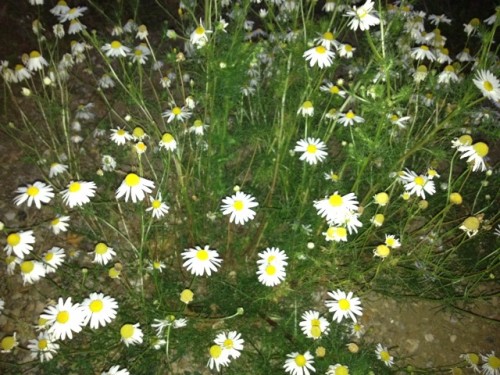
by Kenan White | Sep 28, 2012 | Basics, Gardening, Growing, Herbs, Life on the Farm, Seeds |
There is nothing easy about growing white sage; beginning with its seeds. White sage seeds are tested to a germination rate of twenty percent. Seed with this low of a germination rate are considered too old to use! Being a desert plant, white sage seeds will germinate in a few weeks or 80% will wait for six months to a year, maybe many years. This adaptation insures some white sage seeds will be ready for the next rain, even if ten years away!
This survival strategy is great for the desert, but makes germination uncertain in a greenhouse. Our cell trays are not a help, because we end up with dead cells or ones with too many seedlings. To insure a strong crop of white sage for the spring 2013 season, we resorted to an old fashion method of sowing seed. This means each and every seedling must be carefully transplanted to a cell. Being a species plant, there is wide variation in seedling size.
We carefully plant like sizes together. Watering is always the issue with white sage, well drained potting soil or garden soil with sand added are necessary. Wet soil can cause root rot quickly, never let white sage stay in wet soil!
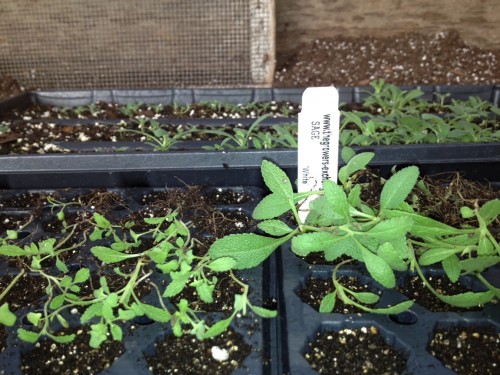
by Kenan White | Sep 19, 2012 | Basics, Gardening, Growing, Herbs, Life on the Farm, Seeds |
Growing herb plants presents many challenges. Almost all are species plants and have their own requirements for germination, growth, and peaceful establishment in someone’s garden. When The Growers Exchange decided to grow only herb plants, we quickly found ourselves pretty much all alone in our commercial greenhouse community. When growing more common plants, we could always call around and find extra plants when needed.
Not so with many herb plants! Finding fresh seed for basil, cilantro, parsley, and all the popular culinary herbs is easy. But if we run out of plants, our neighboring greenhouses will be full with geraniums and other flowering plants. If we run out, then we are out! But this inconvenience is small compared to consistently finding seeds for the less known herbs such as White Sage and Holy Basil. Only a few seed companies sell rare herb seeds. Once certain seeds have been located, they must also be viable. Meaning they must be fresh enough to germinate.
Finding fresh seed for rare herbs is always chancy, and we watch closely to see that we can try again if a batch fails to germinate. To even the odds that we sow fresh viable seed, we have grown our own herb plants in a garden next to the farm office. Seeds are harvested and dried in an old smokehouse. We still must buy seeds, but we also have the seeds we grew, which are very fresh. This doesn’t solve all the problems, but helps plenty and gives us a proactive way to keep a fresh supply of seeds.
by Kenan White | Sep 12, 2012 | Basics, Gardening, Herbs |
We are having a few end of the month visitors to our test gardens and set about cleaning them up about 2 weeks ago. Cleaning out debris, cutting back all of our herb plants, and actually taking in a good harvest. We have pesto to get us through the winter, and a lot of dried herbs to make sure that our stews and savories are outstanding. We even renovated our smoke house and we are doing a lot of drying flowering herbs. Hot work in the middle of a muggy summer but oh, my, it was worth it.
Just strolling through this weekend and was delighted by the amount of blooms that we have – another chance before fall and winter settle in. So, if you are a Zone 7 or above, don’t forget that you might have a chance. This test bed is astounding and reminds us all that herbs in a landscape are invaluable. What started as an after thought has really taken on a life of its own. We keep adding to the beds and right now, they are a butterfly and bee magnet.
Bottom line: the garden is never finished so neither is the gardener. Use a good pair of clippers and make a plan ahead of time, or you will end up tossing some very valuable harvest. For whatever reason (think if I back up 9 months to New Year’s Eve if have it figured out) a lot of my friends and family have September birthdays and I have been making a lot of herb bouquets. Ball jars make very lovely and inexpensive vases.
Pictured below, left to right: Joe Pye Weed, Datura, Evening Fragrance, Feverfew, Dill, Costmary.
